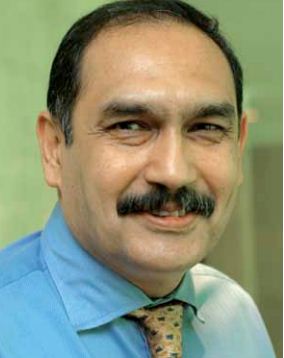
Research has become relatively easy today with open source data analysis software, image analysis software and websites.

Dr Harsh Mahajan, Director, Mahajan Imaging Centre

Innovations in MRI are many. Each radiologist is innovating the way they perform the MRI scan. In contrast to other imaging modalities, the MR system really allows the user to tweak the core settings of the scanning protocols with the aim of providing the best possible images and report for a particular case. This leads to a lot variability in scanning methodology and gives the radiologist the freedom to perform a tailor made scan for each patient. As far as technological innovation is concerned, new types of MRI machines are coming out and there is a trend of high-end high-field MR systems and low-field dedicated MR systems. There are systems available today which perform MRI scans of only specific parts of the body, for example joints, limbs and even breasts. On the other hand there are systems which are now enabling whole body scanning in a matter of minutes and along with many other advanced features.
We have been doing MRI centric research for the last two decades and the quality and enthusiasm of researchers in our country has gone up drastically. We have been performing high-end fMRI research on brain plasticity for the last four years with one of the most reputed cognitive neuroscience departments in the world. We have also been working with some government agencies to see the effect of high altitude on cognitive capability using fMRI. We are more than willing to perform imaging for various drug trials, and have recently been participating in trials for treating multiple sclerosis, epilepsy, thalassemia, psychiatric illnesses, liver cancer and many others. We have been promoting independent research on weight-bearing MR Imaging and we hope to change the way an MRI of the spine is done all over the world. Also, in the fields of rheumatology and immunology, there is a great role that is played by dynamic contrast enhanced MR scanning, which we are trying to prove.
Another innovative application of MR imaging that has recently come into mainstream is the use of MRI to perform High Intensity Focused Ultrasound Ablation of benign tumors, mostly uterine fibroids. Soon the same technology may be used for treating prostate cancer, breast cancer, Parkinsons disease and for targeted drug therapy.

Research has become relatively easy today with open source data analysis software, image analysis software and websites which enable sharing and searching of literature with the click of a button. Teleradiology software enables sharing of images across the globe and hence simplifies interaction within the scientific community at large. There is definitely great scope for both, research and innovation in MRI today and it is only when the machine developers come together with clinicians, radiologists and technologists that this can be taken to another level.
Be a part of Elets Collaborative Initiatives. Join Us for Upcoming Events and explore business opportunities. Like us on Facebook , connect with us on LinkedIn and follow us on Twitter , Instagram.












